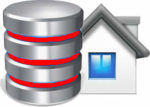Sidestep the Traps and Complexity of J2EE Development with JBoss
Norman Richards and Sam Griffith, Jr.
JBoss isn’t an ordinary open source project. It isn’t an ordinary
J2EE application server, either. In fact, as Norman Richards and Sam Griffith,
Jr. point out in their new book, “JBoss: A Developer’s Notebook” (O’Reilly),
there’s something special about JBoss. For example, JBoss is one of few open
source, community-driven projects that have found commercial success without
betraying their roots. Although JBoss is freely available for any purpose, it’s
backed by a real company, JBoss, Inc., whose hundred-plus full-time employees
fuel the continued development of the project. They also provide training and
support for those who need the reassurance of having strong vendor backing. But
more extraordinary is the technology itself.
JBoss began as an open source EJB container project back in 1999. Six years
later, JBoss 4.0 is a full J2EE 1.4-certified application server. An extremely
capable platform, it provides everything needed to quickly develop a complete
J2EE application with little, if any, configuration required. But–as Richards
and Griffith remind their readers–it isn’t just a J2EE server. “Most people
come to JBoss because they want a J2EE application server, but JBoss’s dynamic
architecture allows it to go well beyond J2EE,” they note.
“Although JBoss provides a fully certified J2EE container, you’re free to alter
the services provided to make J2EE work the way you want,” Richards and Griffith
continue. “You can even throw J2EE away completely, working at a lower services
level or at a higher level using technologies such as AOP and Hibernate. You can
make JBoss as heavy or as light as you need it to be. You can stick to the J2EE
specification for maximum portability or you can rewrite the rules to obtain
maximum agility and performance. With JBoss, the choice is yours!”
Developers who are moving their J2EE projects to JBoss or starting out with
JBoss for the first time will find an ideal companion for their task in “JBoss:
A Developer’s Notebook.” The book is built around practical examples that range
from installing JBoss to rolling out an actual production system. The book
doesn’t explain how to write EJBs or JSPs; its focus is on getting all of the
components to work together in a real application. As with other Developer’s
Notebooks, this guide is weighted towards hands-on lab-style exercises and light
on lecture and theory. Developers working through the exercises will learn how
to:
-Install, configure, and monitor JBoss
-Use Ant to generate and deploy WAR and EAR files
-Use Xdoclet to automate the tedious parts of J2EE
-Work with real-world databases–commercial and open source
-Configure security, including stackable login modules and SSSL
-Configure Log4J to log important events from the server and applications
-Generate database schema automatically and keep the schema in sync with EJBs
-Map preexisting schema into objects
-Roll out a full-fledged production application
“JBoss: A Developer’s Notebook” is the ideal introduction to this important
platform. It will guide readers through the most common and challenging problems
they face as real-world enterprise developers.
Table of Contents
The Developer’s Notebook Series
Chapter 1. Installing and Running JBoss
Installing the Server
Starting Up JBoss
Examining the Server (JMX Console)
Shutting Down the Server
Specifying a Server Configuration
Creating a New Configuration
Chapter 2. Deploying an Application on JBoss
Getting Ant
Creating and Packaging the Application
Running the Application
Modifying the Deployed Application
Exploding Deployments
Viewing the Application on the Management Console
Uninstalling the Application
Chapter 3. Creating a Complete Application
Building the EJB Tier
Using XDoclet to Build the Web Tier
Defining Users
Deploying the Application
Examining the Database
Chapter 4. Connecting to a Real Database
Setting Up MySQL
Adding the JDBC Driver
Creating a Datasource
Linking the Datasource to Our Application
Monitoring the Connection Pool
Chapter 5. Applying Security
Defining a Security Domain
Using a Relational Database for Users
Using Hashed Passwords
Using an LDAP Server for Users
Stacking Login Modules
Enabling SSL
Chapter 6. Logging
Configuring log4j
Adding a Logging Category
Configuring the Log Format
Creating a New Logfile
Rolling Logfiles
Adjusting Logging from the JMX Console
HTTP Access Logs
Logging Generated SQL for CMP
Chapter 7. Configuring Persistence
Managing Schema
Mapping Objects
Mapping Relations
Adding Audit Data
Generating Primary Keys
Chapter 8. Managing and Monitoring JBoss
Starting the Web Console
Monitoring Your Application
Working with MBeans
Monitoring MBeans
Creating a Snapshot
Creating a Monitor
Creating an Email Alert
Managing JBoss from the Command Line
Chapter 9. Rolling Out JBoss
Securing the Management Consoles
Securing the JMX Invoker
Removing the HTTP Invokers
Configuring the JMS Invokers
Removing Hypersonic
Configuring Tomcat Connectors
Setting a Root Web Application
Removing the Class Download Service
Index
